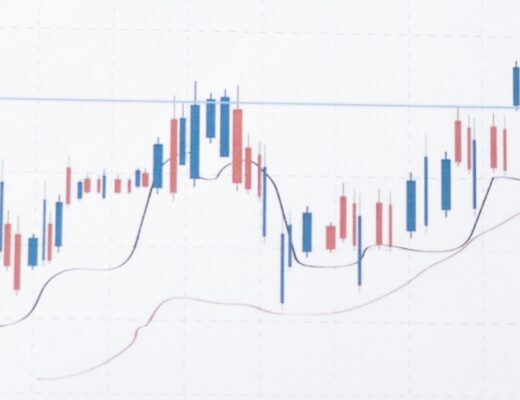Let us begin with defining the Initial Public Offer (IPO) before understanding how to find the right IPO for investment purposes.
An Initial Public Offer (IPO) is where any private company offers its equity shares to the public. Herein, the IPO becomes an exit option for the existing shareholders. We have written about whether should you invest in IPO or not. However, this article is about finding the right IPO, which assumes that the investor has already decided to invest.
Essentially, investors must take the investment decision basis the risk profile. Typically for investors with high-risk tolerance, participating in IPOs can be integral to their investment strategy. However, investors must conduct a thorough analysis before investing in an IPO like any investment decision. Further, it is critical to invest at the right price. Therefore, if the valuations are high or not supportive of the business fundamentals, investors must not invest.
In conclusion, IPOs are a unique proposition. Firstly, they provide investors with an opportunity to participate in the growth of the business. Secondly, IPOs offer a chance to grow wealth significantly. Finally, investing in IPO is about putting a bet on promoters as much as in the business.
Investors must take investment decisions judiciously, including investing in an IPO. And based on the above, we can summarize the decision points as:
- Risk tolerance
- Business fundamentals
- Valuation
Of the above, risk tolerance is very individualistic, and investors must decide based on their circumstances. Therefore, for this article, we will dig into the other two aspects to assist how to find the right IPO for investment purposes.
Understanding the business fundamentals
From an investment perspective, understanding the fundamentals is step zero. Here is how to deal with this aspect, and that is by splitting it into parts:
Strength of business
A thorough review of the company’s business model (revenue and cost drivers), management credentials and historical financial performance is required. The simplest way to get this information is through the company’s red herring prospectus. In addition, the investors can visit the Securities and Exchange Board of India (SEBI) website or follow this link to find the document.
As an investor, the business model must be convincing, and so should be the historical financial performance and margin expansion. If the business’s fundamental strength is compelling, it scores a positive.
Business potential
The potential to grow is probably the most crucial aspect. Everything else the same, markets will value a business based on the growth potential.
An assessment of the industry prospects, past growth and peer performance will provide insights into the business potential. However, these are primarily external factors that support the expansion of an organization.
Investors must also assess the internal factors. These are investments in research for new products, product positioning, technological advancements, market penetration, focusing on strengths, etc. Progress on these parameters indicates how well the company is preparing itself for the future. If a long-term business potential exists, again scores a mark.
Promoter’s vision
At the IPO stage, we know significantly less about the company. Therefore, investing in IPO is taking a bet on the pedigree of promoters and their vision about the company.
The shareholding of the promoters will that will continue post the IPO does indicate their belief. But, of course, the law mandates a certain percentage. Still, often we witness that many promoters keep significant holding in the company even if the law allows dilution.
Companies with visionary promoters or anchor investors who remain significantly invested post the public offer are probably good IPOs to participate.
Use of funds received from the IPO
Cash is the king – and we know it well. So the company raising funds via an IPO receives a sizeable sum of inflows in the process. However, of course, in the case where the IPO is only about stakeholders selling their shares, no monies get credited to the company account.
In the case of the former, where the company receives money, investors must understand the planned usage of funds. Usually, companies would (a) repay the debt, (b) expand production facility, (c) make technological advancements, (d) acquire new businesses, (e) fulfil working capital shortage, etc., with the incoming funds.
Investors should understand the usage of funds carefully. The best usage of funds will lead to higher revenues and improved margins. In other words, effective use of funds is a positive.
Understand the pricing
Pricing the initial public offer is an art, and we wrote about why you should not invest in an IPO. However, it is imperative to note that IPO is only good if the price is lucrative for the investors. In other words, highly-priced offers may not be investible even if the company’s fundamental strength is excellent.
Needless to say, that valuation is critical. The offering company must price the offer so that there is a potential for capital appreciation for the investors. From an investor’s perspective, they must gauge the upside possible.
Every investment can be good and bad simultaneously, depending on the offer price.
Price discovery happens after a company gets listed. The market will value a company based on its fundamentals and future. Therefore, the fair price can be lower or higher than the IPO price.
Priced expensively
An Initial Public Offer (IPO) is often an exit route for the initial investors (aka promoters). These investors would like to get significant returns on their invested capital as they took a high risk.
Therefore, the issue price is often to compensate the initial investors. And, the offer at such a high premium can be a problem for retail investors.
How? Simply because the share prices may not sustain at the offer levels. At that time, the reduction in the stock prices will lead to capital erosion for retail investors.
Ability to sustain price post the lock-in period
SEBI guidelines clarify that a lock-in period of 30 days applies for the anchor investors for 50% of their total shareholding. The lock-in period is 90 days post the IPO for the balance shareholding.
Once the lock-in period gets over, the anchor investors can sell their shares. If these investors sell their shares, the stock prices may temporarily fall and accrue losses for the retail investors.
What next once business fundamentals and pricing is clear?
Upon following the above steps, you would grasp the business fundamentals and impact due to the pricing of the issue. Upon satisfying yourself on both aspects, here is what to do next.
Understand projections
The prospectus filed with the Securities and Exchange Board is quite a valuable document. The sheer size of the filing can be overwhelming at the start, but you must look out for relevant sections. In other words, the paper offers tremendous information about the sector, peers, financials, promoters, risks, opportunities, etc.
In other words, instead of getting lost under heaps of information, find the relevant information. Then, try to ascertain the projected financial situation for the company. After that, for simplicity, investors can assume that a better the economic future will lead to better stock performance.
Ascertain the reason for going public
We have mentioned earlier in the article that IPO serves as an exit route for the original investors. However, it does not mean that all the promoters and anchor investors will exit the company.
Moreover, paving the way to exit is only one of the purposes of an IPO. There can be other reasons like paying off debt, funding working capital requirements, etc.
Eventually, investors can expect the company to grow from where it is. And, if the promoters and initial investors also believe in the company, they will stay invested. Of course, their stake may dilute, and some investors may exit, but sizeable equity shall remain with the promoters. Continuing stake indicates the belief in the future of their company, and hence a positive indicator.
Know the broader market levels
In the bull phase (market rising high), almost every stock performs typically. However, only companies with solid fundamentals perform when the market gets choppy (sluggish).
Investors need to ascertain the broader market level when investing. Tread cautiously when the market, in general, is performing well. In other words, invest carefully in the bull market and at a high point.
Realize the sector performance
We invest in a stock, but the company forms a part of a sector. So any development in the industry will impact every company in that sector.
Investors must gain a broad level understanding of the sector before investing. Growing sectors and industries usually offer better growth opportunities to the company.
Avoid the hype
All that glitters is not gold, especially in the stock market. This statement is in the context of the price at which a company is made available in an IPO. A good company can be a bad investment if the entry price is very high.
A high-profile offer may provide significant gain on its day of listing. But on the other hand, a newbie may disappoint investors or stump investors with its listing gains. Investors can never predict the listing performance.
What the investors can gauge is the propaganda around an offer. Hype can be a mechanism to cover the expensive valuation, limiting future profits. Eventually, the stock price performance will be underwhelming over the long term in such cases. Therefore, investors must avoid the hype and focus on fundamentals and pricing.
Look at who else is investing
Qualified Institutional Buyers (QIBs) often possess better-investing capabilities vs an individual retail investor. Therefore, a peek into the QIBs lining up to invest via an IPO can be a good indicator. In other words, retail investors can ascertain the quality of the IPO and the pricing by looking at the institutional interest.
The final thoughts – how to find the right IPO for investment purposes?
We have elucidated several factors, internal to the company and IPO pricing and external factors. A combination of all these parameters will help investors find the right IPO.
Broadly, these are the factors to consider (alongside all we mentioned above) as you evaluate a company from an IPO investment perspective:
Promoter pedigree – investors should dig deep into the experience and background of the promoters. Further, the stability and trustworthiness of the senior management play a crucial role in the success of an organization.
Peer companies and the sector – understanding the industry and the performance of peer companies is critical. A close examination of the historical performance of peer companies can give valuable insights. For instance, revenue growth achieved during the past few years, operating margins, cash flows, etc. All this information is available in the offer document, and investors should read the document in-depth.
Institutional investors – the quality of institutional buyers, private equity, venture funds, etc., indicates the interest in the company. Further, their wish to invest also shows the pricing of the issue.
Corporate governance – transparent and robust governance practices are favourable and attract investor attention. Investors prefer to invest in companies with ethical business practices. In addition, companies must consider the impact they have on the environment. Therefore, adopting sustainable ways of working is the preferred way forward.
Scepticism – there is always some level of uncertainty attached to an IPO. Therefore, investors must exercise adequate caution and carefully analyze the details of the issue.
The bottom line
Investors who are comfortable with the company should invest in the IPO. Further, the investors who are satisfied with the company’s future potential should consider buying more shares once the company is listed. However, as a rule of thumb, we suggest that investors avoid purchasing shares on the day of listing; instead, they should buy on dips.
It is generally okay to remain cautious while deciding to invest and avoid the hype. In conclusion, investors must assess risks (and opportunities) before investing. Unfortunately, there is no straightforward method to know the outcome. Every investment decision is a matter of perspective. Do feel free to connect with your financial advisor if you need guidance.
Happy investing in IPO!
About the author
The author is a senior finance professional with over fifteen years of work experience in corporate finance. He has an affinity for matters relating to personal finance and investment management. The author wants to share his knowledge and understanding of the subject through his writing.
Please leave your comment or share thoughts on this article via email at decodefinance.in@gmail.com. For more articles, please visit the website www.decodefinance.in.
Disclaimer
The author has used his knowledge, experience, and understanding of the subject and has exercised extreme caution to avoid possible mistakes. However, the author does not take responsibility for any error that exists.
The article’s views, opinions, and thoughts belong solely to the author and not necessarily to the author’s employer (past or current), organization, committee, or other group or individual.
Under any circumstances, the author shall not be liable for any views or analysis expressed in this note. Further, the opinions expressed are not binding on any authority or Court. We advise readers to consult their financial advisor for assistance in their specific case.




